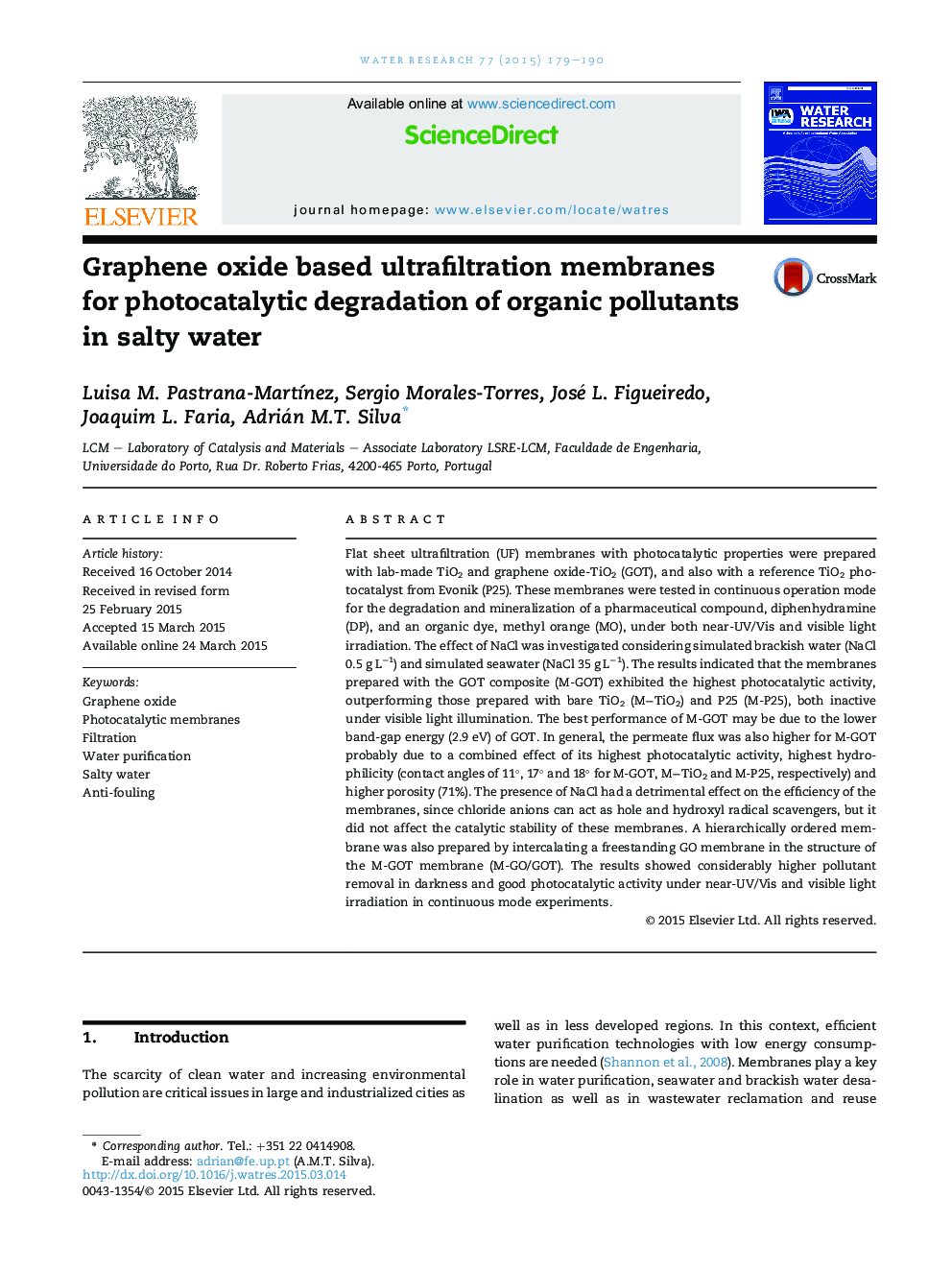| Article ID | Journal | Published Year | Pages | File Type |
|---|---|---|---|---|
| 4481140 | Water Research | 2015 | 12 Pages |
•Ultrafiltration membranes prepared with different photocatalysts.•Degradation of organic pollutants in simulated brackish water and seawater.•High catalytic activity and permeate flux with a graphene oxide-TiO2 membrane.•Hierarchically ordered membrane prepared by intercalating a graphene oxide layer.•The presence of NaCl has little effect on the catalytic stability of the membranes.
Flat sheet ultrafiltration (UF) membranes with photocatalytic properties were prepared with lab-made TiO2 and graphene oxide-TiO2 (GOT), and also with a reference TiO2 photocatalyst from Evonik (P25). These membranes were tested in continuous operation mode for the degradation and mineralization of a pharmaceutical compound, diphenhydramine (DP), and an organic dye, methyl orange (MO), under both near-UV/Vis and visible light irradiation. The effect of NaCl was investigated considering simulated brackish water (NaCl 0.5 g L−1) and simulated seawater (NaCl 35 g L−1). The results indicated that the membranes prepared with the GOT composite (M-GOT) exhibited the highest photocatalytic activity, outperforming those prepared with bare TiO2 (M−TiO2) and P25 (M-P25), both inactive under visible light illumination. The best performance of M-GOT may be due to the lower band-gap energy (2.9 eV) of GOT. In general, the permeate flux was also higher for M-GOT probably due to a combined effect of its highest photocatalytic activity, highest hydrophilicity (contact angles of 11°, 17° and 18° for M-GOT, M−TiO2 and M-P25, respectively) and higher porosity (71%). The presence of NaCl had a detrimental effect on the efficiency of the membranes, since chloride anions can act as hole and hydroxyl radical scavengers, but it did not affect the catalytic stability of these membranes. A hierarchically ordered membrane was also prepared by intercalating a freestanding GO membrane in the structure of the M-GOT membrane (M-GO/GOT). The results showed considerably higher pollutant removal in darkness and good photocatalytic activity under near-UV/Vis and visible light irradiation in continuous mode experiments.
Graphical abstractFigure optionsDownload full-size imageDownload high-quality image (611 K)Download as PowerPoint slide
